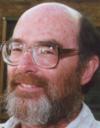Navigating developing world into the future
18 November 2002
Merry presented a keynote address at the UN/United States of America International Meeting of Experts on the Use and Applications of Global Navigation Satellite Systems (GNSS) in Vienna, Austria, which featured representatives from the US, Europe and Russia, among others.
The meeting was hosted by the United Nations Office for Outer Space Affairs (UNOOSA), responsible for promoting the peaceful uses of outer space. UNOOSA is also the trustee of the UN's Programme on Space Applications (PSA), through which it is championing the use of space science and technology for the economic and social development of, particularly, developing nations.
Merry's invitation to the Vienna meeting was the result of two papers he delivered at a meeting in Lusaka, Zambia, in July this year, which was the final of four regional PSA workshops that were focused on the applications of existing and near-term GNSS for, among other things, global environment objectives and sustainable development programmes. These systems include the US' ever-popular Global Positioning System (GPS), the Russian Global Orbiting Navigation Satellite System (Glonass) and the yet-to-be-launched European Union's Galileo programme.
In addition to his keynote lecture at last week's gathering, Merry also co-chaired a working group meeting that identified and proposed solutions to problems in education and training in GNSS in developing countries. Among his recommendations were the expansion of short courses and awareness seminars, and the introduction of short modules on GNSS into the curricula of the many natural science disciplines.
According to Merry, GNSS has already been put to good but limited use in aviation, agriculture and even medicine. “The problem is that some institutions focus on training geomaticians, and what seems to be needed are courses for people in the environmental and the natural sciences – the geologists, the zoologists, even the oceanographers – who need to know a little bit of how to use the system, about its features and benefits,†he says.
“In Africa, South America, South-East Asia and Eastern Europe, these people are not getting this introduction.â€
 This work is licensed under a Creative Commons Attribution-NoDerivatives 4.0 International License.
This work is licensed under a Creative Commons Attribution-NoDerivatives 4.0 International License.
Please view the republishing articles page for more information.
Related
How oceans recover after global catastrophe
19 Jan 2026
Alderman Owen Kinahan (1955–2026)
06 Jan 2026










